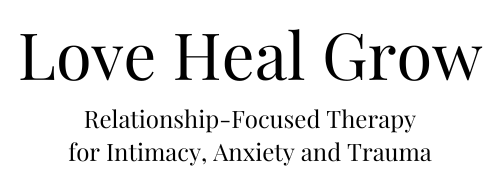
Who remembers “the dress”?
In 2015, a photo of a dress became a viral debate. Was it blue and black or was it gold and white? While we know now that the dress was blue and black, many people truthfully perceived that image to be of a white and gold dress. But how is that possible?
The truth is that our brains are constantly making guesses and taking shortcuts to perceive the world around us. Our view is based on the context we see and how we interpret it — which is why some people saw a white and gold dress.
This is why optical illusions affect our perception so much. This piece from Psychology Today offers 2 more examples of how context influences not only our perception of color but also meaning. Another optical illusion example is the Ebbinghaus illusion which causes our brains to misinterpret the size of two circles.
Alright, but what does a 7-year-old photograph of a dress and a series of optical illusions have to do with sex? Well, just like how context influences our perception of the world it also influences our responses to sexual stimuli.
What Is Sexual Context?
So, what exactly is “sexual context”? This concept was developed by Emily Nagoski in her book Come As You Are. In essence, sexual context is the effect of external factors on our sexual desire.
Factors like who we are with, our mood, and any potential risks could make environments or actions that would usually increase our sexual desire not have any effect or even become a turn-off.
How Does This Context Affect Sexual Desire?
As stated before, sexual context can have a very profound effect on sexual desire. But, it is important to note that when it comes to sexual context there are both good and bad environments. Good environments are going to be those contexts where you may feel heightened sexual desire. These usually occur in situations where you feel comfortable and safe.
Bad environments, on the other hand, are those that make us feel uncomfortable, stressed, or even in danger. These environments will make us react to those same sexual stimuli with avoidance and maybe even fear.
In her book, Nagoski says that research shows that women actually have a higher sensitivity to the environments around them when they are being sexually intimate than men do. Research suggests that this is because of a theory called “parental investment theory.” Basically, this theory states that the partner who is more invested in raising their current or potential children (which is a role that has been socially geared towards women for generations upon generations) will be more selective about their partners and encounters. Now, of course, a person’s sexual response will differ from person to person and while some women may be more selective, that by no means means that all women are going to be more sensitive to these contexts.
Understanding this concept is crucial to being able to identify the contexts or environments that enhance your sexual intimacy and those that inhibit your ability to connect with your partner and enjoy that intimacy.
Assessing Your Environments
We all have positive and negative contexts that affect how we respond to sexual stimuli. The important thing is to know what these contexts are and how they affect us. This way we can make efforts to create opportunities for those wonderful sexual experiences more often and work to reduce our exposure to the negative environments.
Nagoski says that the best way to discover these environments that affect us most strongly is to reflect on our previous sexual encounters. Think about some of your most pleasurable encounters and think about some of your least pleasurable experiences and try to figure out the factors that influenced those perceptions. What was your mood like? Where were you? Who were you with? What kind of relationship were you in?
It can, of course, be difficult to recall many sexual encounters and if you are having trouble doing so, you can begin taking note of how you feel after your current sexual experiences in a journal to reflect on later. Having a description of your feelings as well as the contexts surrounding the sexual encounters themselves can help you to identify patterns and determine which contexts are most influential to your level of sexual desire.
Try This Activity
This worksheet, developed by Nagoski, can be a great place to start if you (or you and your partner) are curious about what your good and not-so-good sexual contexts are.
The worksheet is split up into 4 sections, or steps. First up is the reflection part. Think about all of your sexual encounters — the good and the bad — and try to think about what was going on contextually for both. For example, were your sexual encounters reliably great when you were at home and enjoying an evening with your partner? Were your sexual encounters reliably not-so-stellar when you were coming home after a long day?
The next section is brainstorming some ideas that you and your partner could use to shift your sexual contexts to the more pleasant ones that enhance your sex (rather than bring it down). This worksheet simply has you identify 5 things that you could do (as a couple) that may make it easier for both of you to achieve those sexy contexts.
You simply have to record:
- What the thing you can do is
- How much impact it will have
- How easy it would be to do
- How soon you could begin
The last bigger section of the worksheet has you pick 2-3 of those ideas that you both feel will be the best to implement in your relationship. Here you will want to be as specific as you can and list everything that would need to happen for you to make these changes. Think of this section as your to-do list and include the actions that you will both need to take to achieve the results you want.
The final step is to pick one of the 2-3 changes you detailed and actually implement that one. Pick a start date (sooner is better than later!) and commit to your plan.
This is a great activity to do with your partner because it not only helps you to learn about each other but also helps you to take steps in your relationship to improve the quality of your sexual encounters — which can lead to all sorts of fun!
Looking for More Guidance?
While this activity can be a great place to start, it can sometimes be difficult to know how to bring up conversations about sex with your partner — especially if you are in a new partnership or if you’ve been in your partnership for years and are worried about your partner feeling like they aren’t doing something right. This feeling of embarrassment and discomfort when it comes to talking about sex has been ingrained in many of us by society and it can be difficult to break free from these feelings.
This is where it can be helpful to talk to a therapist — either as an individual or as a couple. Therapists can help you overcome these hurdles and facilitate a safe and controlled environment where you can feel more comfortable talking about sensitive topics (like sex) with your partner. Another thing that a therapist can be a great help for is helping you and your partner to facilitate that change that you are looking to make in your sexual contexts. Sometimes all it takes is someone asking you the right questions or a person to bounce ideas off of to figure out the best way to approach a change, come to a compromise, and implement a plan.
So, if you are wanting to create better, more pleasurable sexual encounters with your partner but you’re not sure where to begin, please do not hesitate to reach out to us.
























